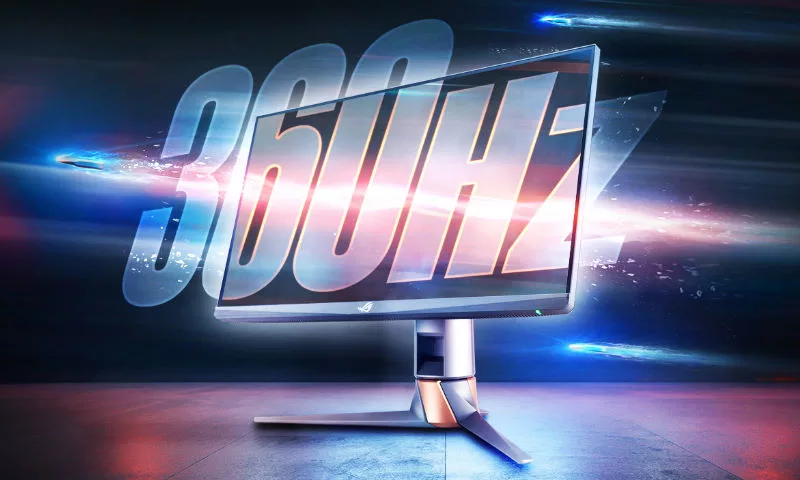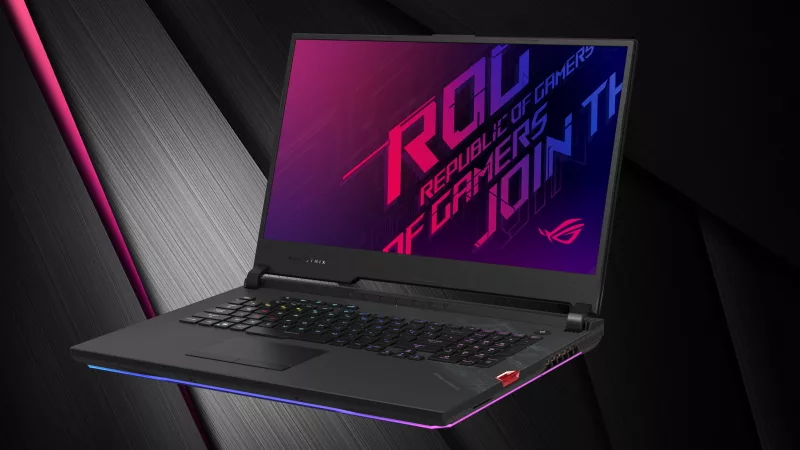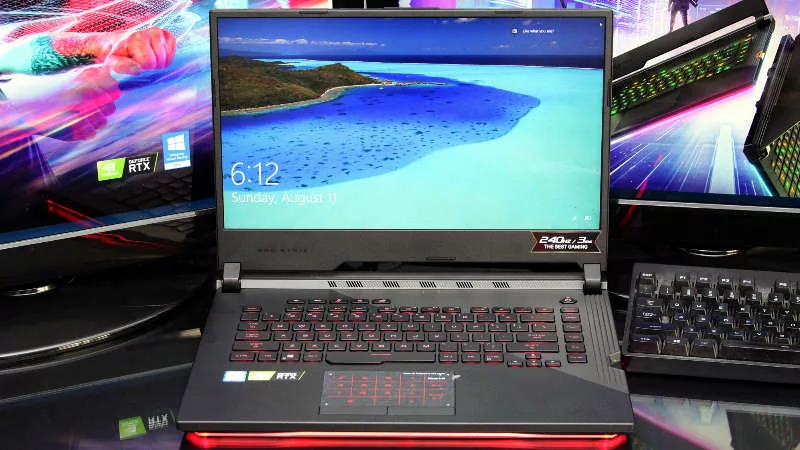At home and on the road with NiP's go-to gear
Pro gamer life is a whirlwind of travel. Texas one week, Ukraine the next. Istanbul, Romania, Russia. The packed stadiums, hot spotlights, and cheering fans blur together. Three hundred days or more on the road means practicing at home is a luxury, especially for teams like Ninjas in Pyjamas.
That means gear has to suit and accommodate the team's needs, not the other way around. Regular gamers often make tradeoffs when choosing their gear, whether it’s a lower-refresh display to save on cost, or dialed-down in-game settings to maximize performance from their laptop’s GPU. Pro esports players can’t afford any compromises at all. They need consistent, tournament-grade performance no matter where they’re practicing. Gaming laptops and desktops need to be powerful enough to handle the rigors of training, yet portable enough to pack up and take on the road.
Performance on the road
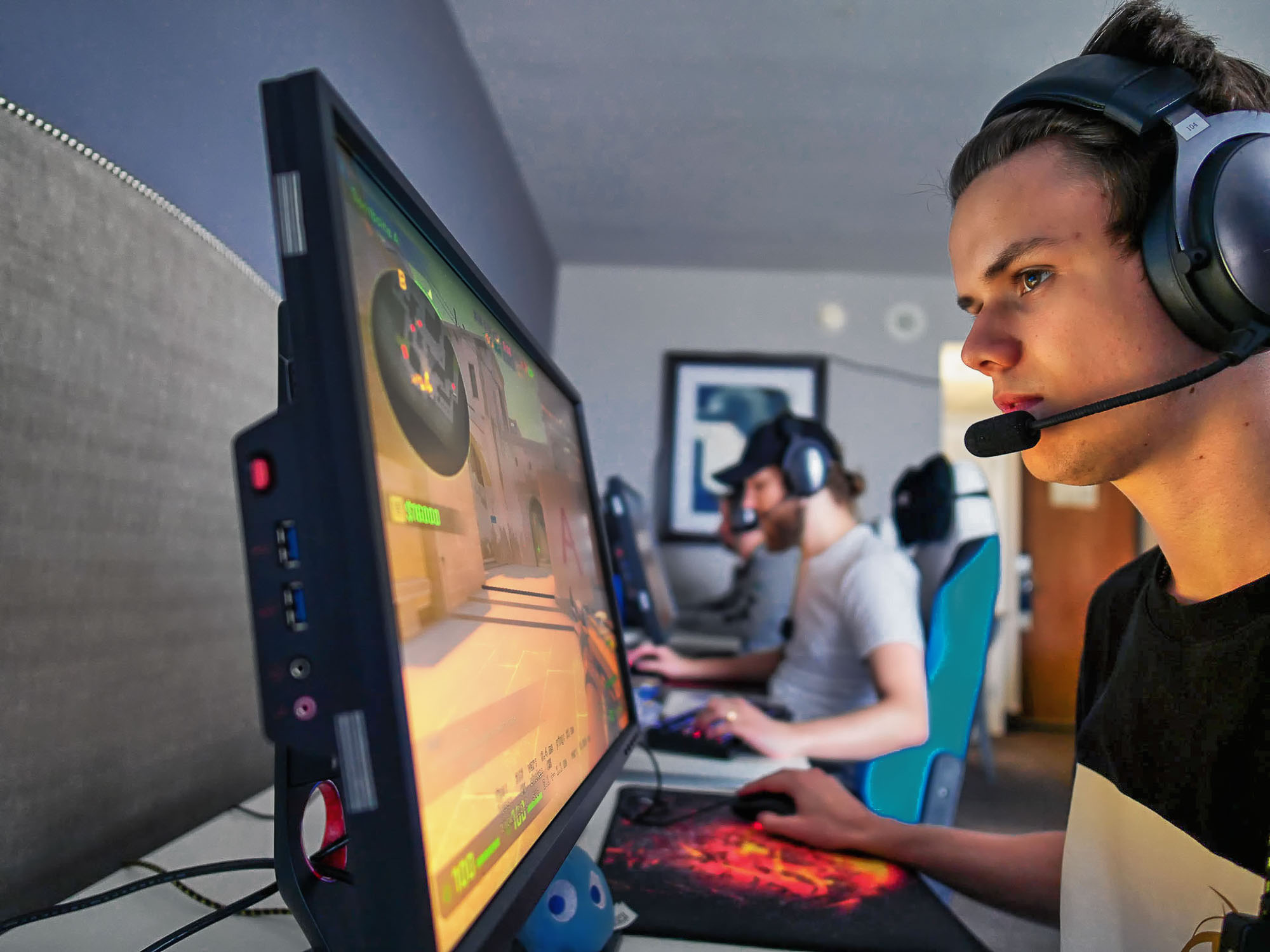 If players are lucky, when they’re on the road they get a repurposed hotel room for practice (note the wall-mounted bed headboard on the left). Photo via NiP / Petter Nilsson.
If players are lucky, when they’re on the road they get a repurposed hotel room for practice (note the wall-mounted bed headboard on the left). Photo via NiP / Petter Nilsson.
While traveling, players might get a hotel room that’s repurposed into a makeshift boot camp, but that kind of setup is not guaranteed at every destination, so the team needs laptops capable of reproducing the same experience. Lots of gaming laptops prioritize performance at the expense of portability, and while a beefy gaming notebook is a sure bet for power, it’s not that easy to carry around in a backpack. Others fail to measure up to the performance you get with a desktop for very different reasons—high-refresh displays are not a given, and a lower refresh rate means you risk practice sessions not being as smooth as gameday gameplay.
NiP players have the ROG Strix Scar II GL504 to eliminate potential issues when they’re on the road. Patrik ‘f0rest’ Lindberg was surprised at how enjoyable and fluid the gaming experience is on this esports laptop. Powered by an Intel Core i7 CPU and NVIDIA GeForce GTX 1060 discrete graphics (and now available with the latest GeForce RTX GPUs), the Scar II packs a powerful punch for CS:GO despite a deceptively slim 1” thick chassis. What really seals the deal is the display’s 144Hz refresh rate and 3-ms response time. f0rest was initially skeptical about how much he might use a laptop, but he soon saw how much it would help with staying sharp. When you can practice in the hotel room, on the plane, in the airport, or anywhere, well, “it’s just a bit [of] extra advantage you can get as a player,” he says.
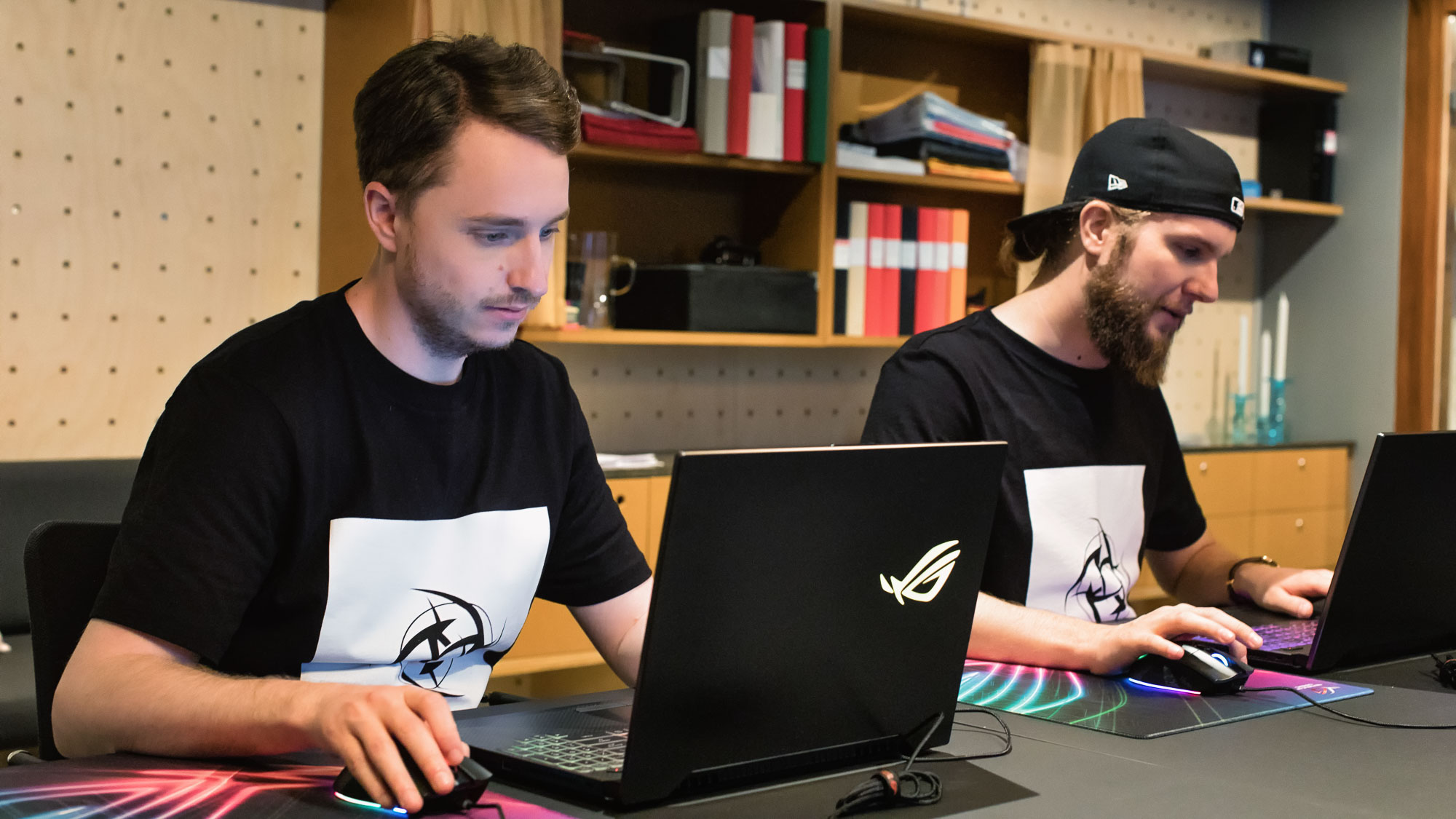 f0rest (right) was skeptical at first, but now he sees how great it is to have a gaming laptop on the road, especially something as lightweight and compact as the Scar II.
f0rest (right) was skeptical at first, but now he sees how great it is to have a gaming laptop on the road, especially something as lightweight and compact as the Scar II.
Fredrik ‘REZ’ Sterner agrees. He uses the laptop every time they’re on the road and feels like it packs a desktop into a laptop's form factor. “Everything is perfect,” he says. “It’s complete. [It’s a] stationary computer in a laptop size.” It’s light and easy to throw into his backpack for any tournament trip, no matter how far the trek. The Scar II is available in two sizes and clocks in at just 2.4 and 2.9 kg for the 15" and 17" models, respectively. "There’s no question about it,” REZ says. “It will always follow me.”
On the road, many players are all business, no play: laser-focused on practice and more practice before the day of reckoning. But not everyone performs best under that kind of high pressure. For some, a laptop is about more than squeezing in an extra round. It's about gaining more options to de-stress and decompress.
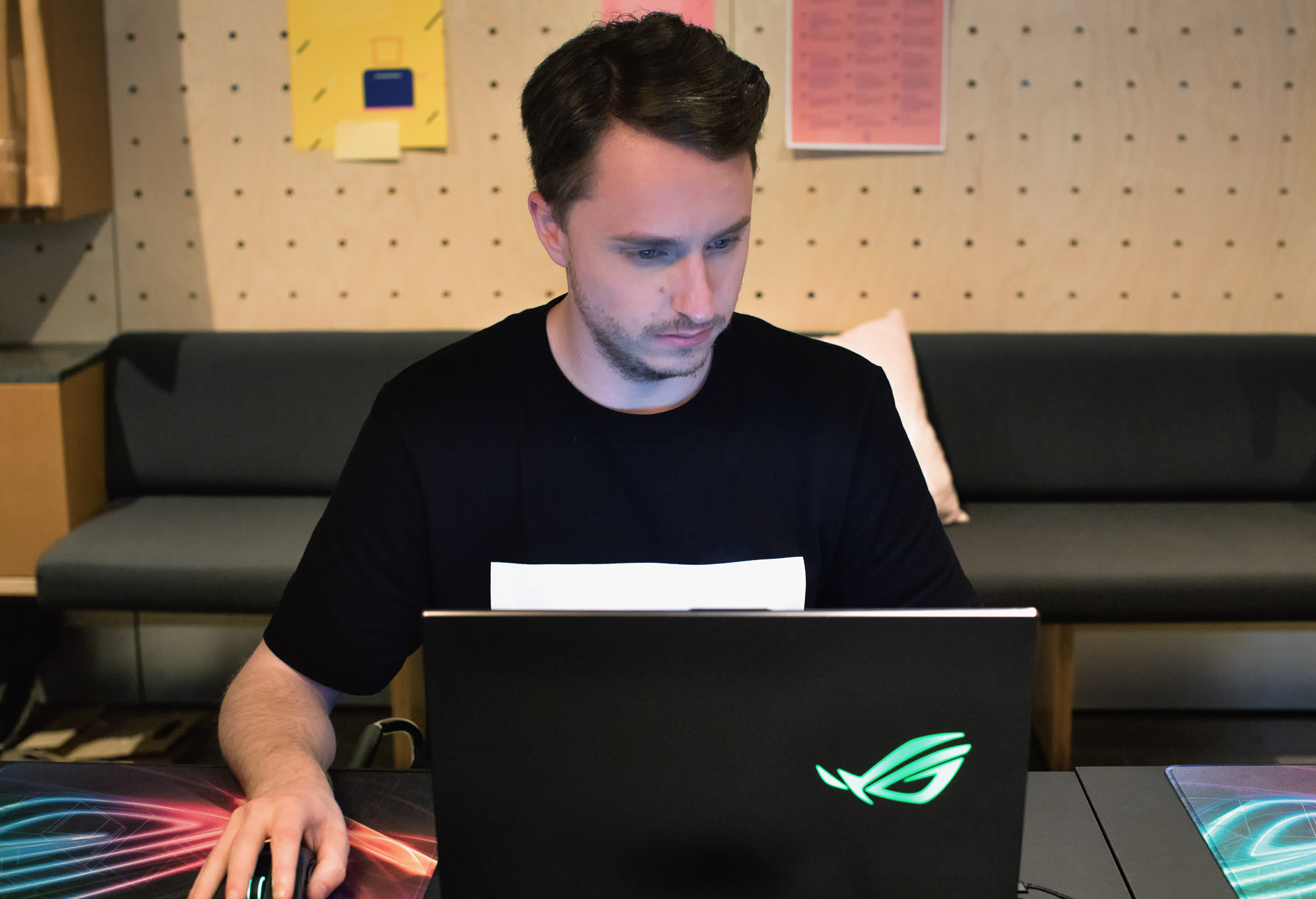 GeT_RiGhT says he may be one of the team’s most avid laptop users.
GeT_RiGhT says he may be one of the team’s most avid laptop users.
Christopher ‘GeT_RiGht’ Alesund is one of those types. He's one of the team's most avid laptop-users, but not only for CS:GO. With a 15-year career under his belt, the Scar II provides a much-needed escape from the rigors of pro life. This helps him stay tournament-ready in his own way. “I actually played PUBG every night,” he says, referring to one of NiP’s recent tournament trips. Although players are often criticized for any perceived lack of focus, he says that having fun made him better at the actual tournament.
Even now, many months and matches later, GeT_RiGhT and the rest of the team are still surprised and impressed by their laptops. “It felt smooth. It was what I needed and what I wanted from a laptop," says GeT_RiGhT. “I actually didn’t even know laptops could run games that well,” adds REZ with a laugh.
Staying sharp at home
During those rare moments back in Sweden, NiP needs to game on tournament-level hardware, the same kind of gear they’d find in the arena. High-quality equipment is just the start, and matching specs to stadium standards prevents surprises on the competition day.
Ultra-high-refresh displays are a must once you hit the big leagues, and NiP’s 240Hz ROG Swift PG258Q monitors are specially designed for esports. The higher refresh rate shows more frames per second for smooth, fast gaming, and the narrow bezels offer a more immersive experience. Pros swear by the difference. “I had a 144Hz [monitor] before,” says Jonas “Lekr0” Oloffson. “Now with 240[Hz] it feels completely different. It feels almost like a different game.” He says when you go from 60Hz to 144Hz, and then from 144Hz to 240Hz, there’s no going back.
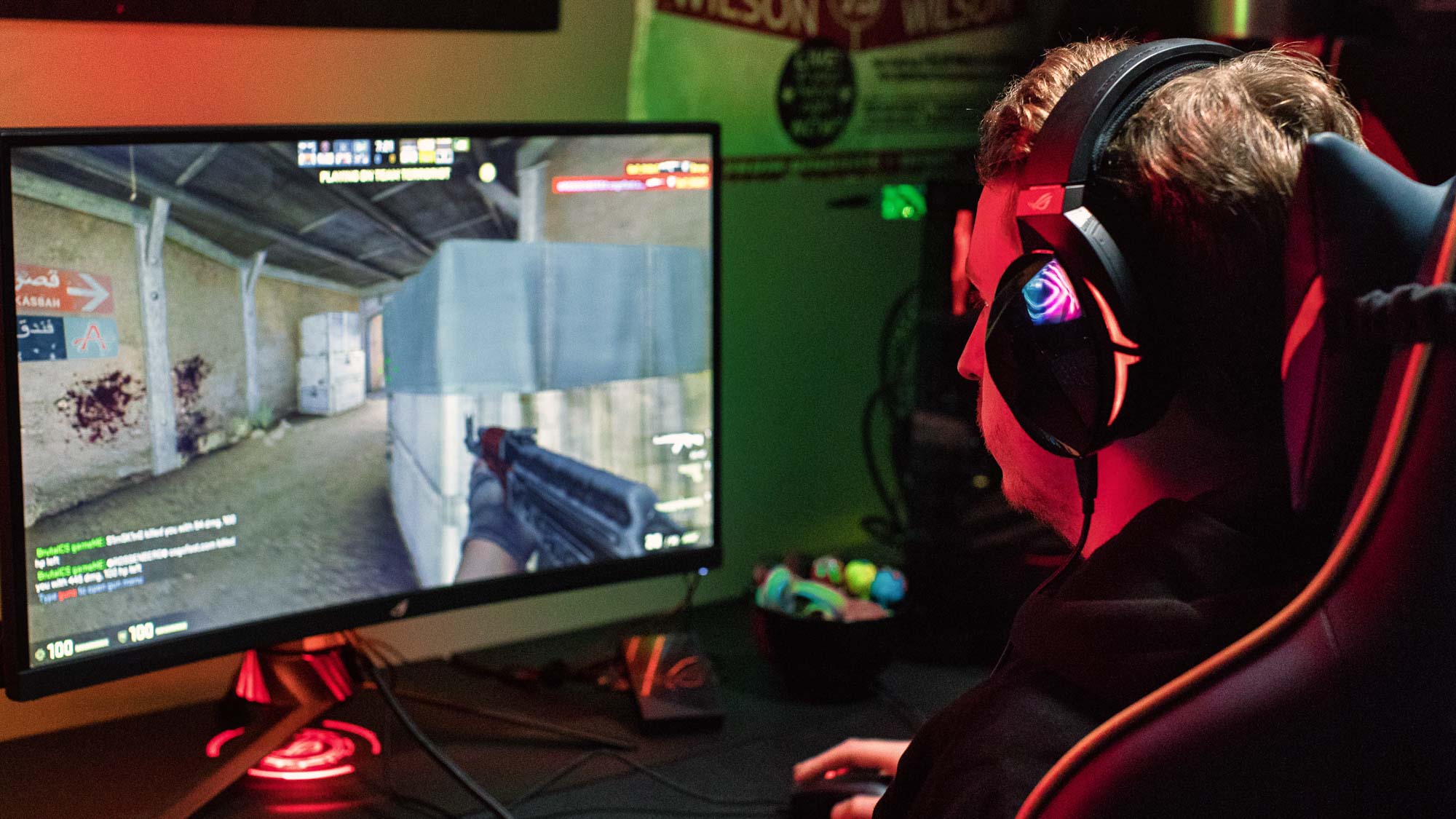 GeT_RiGhT says that for him it isn’t just for practice, but for unwinding before competition days.
GeT_RiGhT says that for him it isn’t just for practice, but for unwinding before competition days.
As someone who’s very sensitive to lag, former NiP PUBG player Oliver 'Ollywood' Tell says he’s tried a lot of monitors, but he and other players say the PG258Q is the best monitor they’ve ever used. Features like NVIDIA G-Sync and a best-in-class 1-ms response time ensure smooth movement that’s crisp and clear. The low response time keeps everything sharp, even when the action is frenetic. A few milliseconds might seem negligible, but for pros playing fast-paced games it’s the difference between clean movement and noticeable motion blur that prevents a clear headshot. “It feels almost too smooth. It’s really, really good," says former NiP player Drew ‘Sweaterr’ Jacob Miser. G-Sync prevents stuttering by matching the display’s refresh rate with the GPU’s frame rate, displaying new frames as they’re rendered for silky visuals, though pros looking for the absolute best performance may elect not to use it because of the minor degree of input lag it introduces in certain situations.
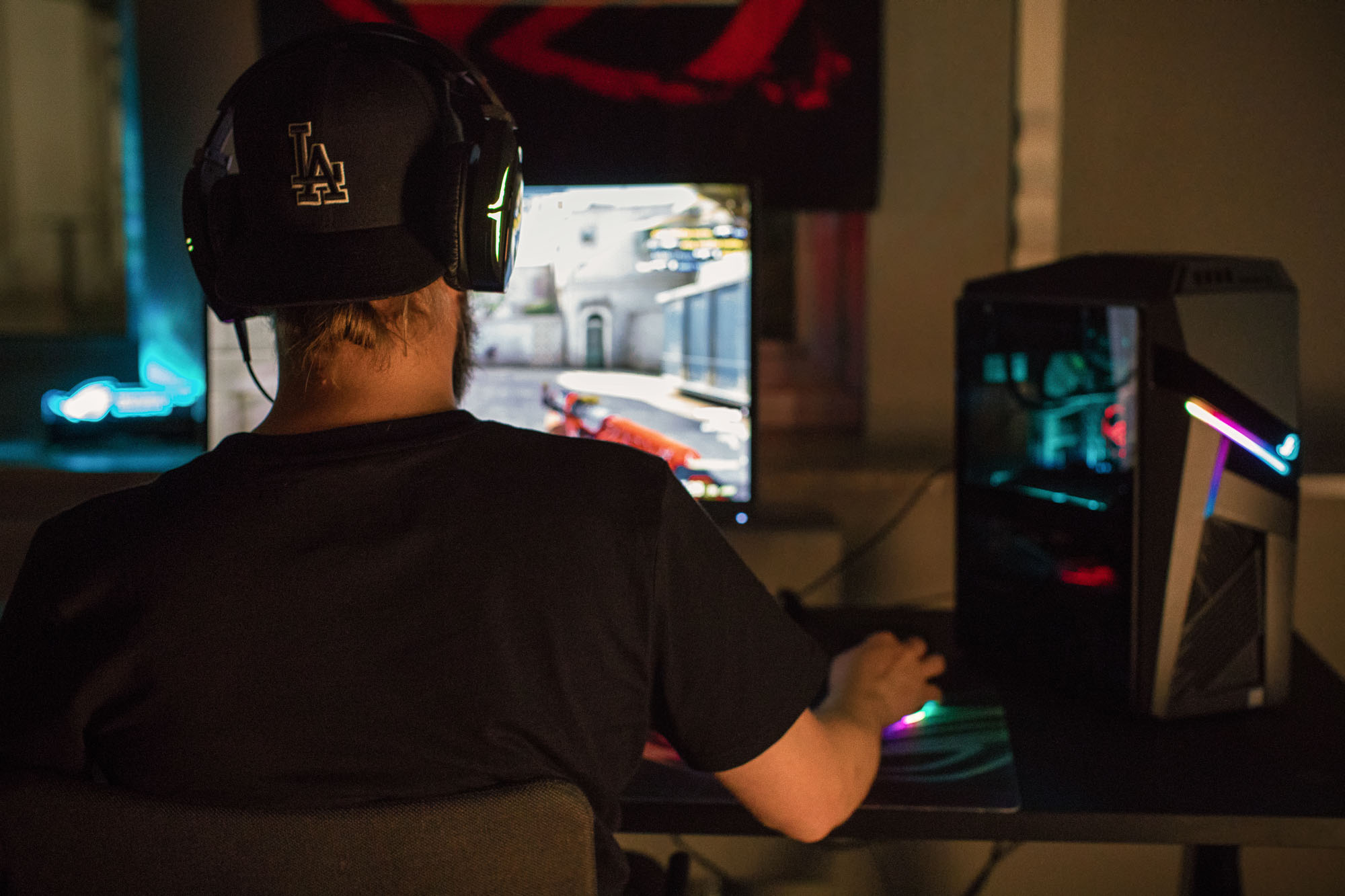 NiP’s Landskrona bootcamp’s ROG Strix GD30CI desktops give them the kind of performance they need to stay sharp when practicing at home.
NiP’s Landskrona bootcamp’s ROG Strix GD30CI desktops give them the kind of performance they need to stay sharp when practicing at home.
Of course, to make the most of your high-refresh display, you need a PC capable of cranking out the frames, and NiP’s bootcamp machines sure are. These days, they're using top-of-the-line ROG Strix GL12CX desktops with 9th Generation Intel Core i9 processors factory overclocked up to 5.1GHz. Add in the latest GeForce RTX 2080 Ti graphics cards and these machines are chomping at the bit, ready to take on even the most punishing games. Even the matte black, ninja-inspired chassis perfectly complements a team whose entire brand is built around the name Ninja.
Surprisingly, when players join the team, it may be their first time owning a high-spec machine. That was the case for Lekr0. “I didn’t have that good of a computer before,” he says. It was thrilling to start using the GL12CX because it meant saying goodbye to FPS issues that plagued his practice sessions: “Ever since then, I haven’t had any problems.”
Difference in the details
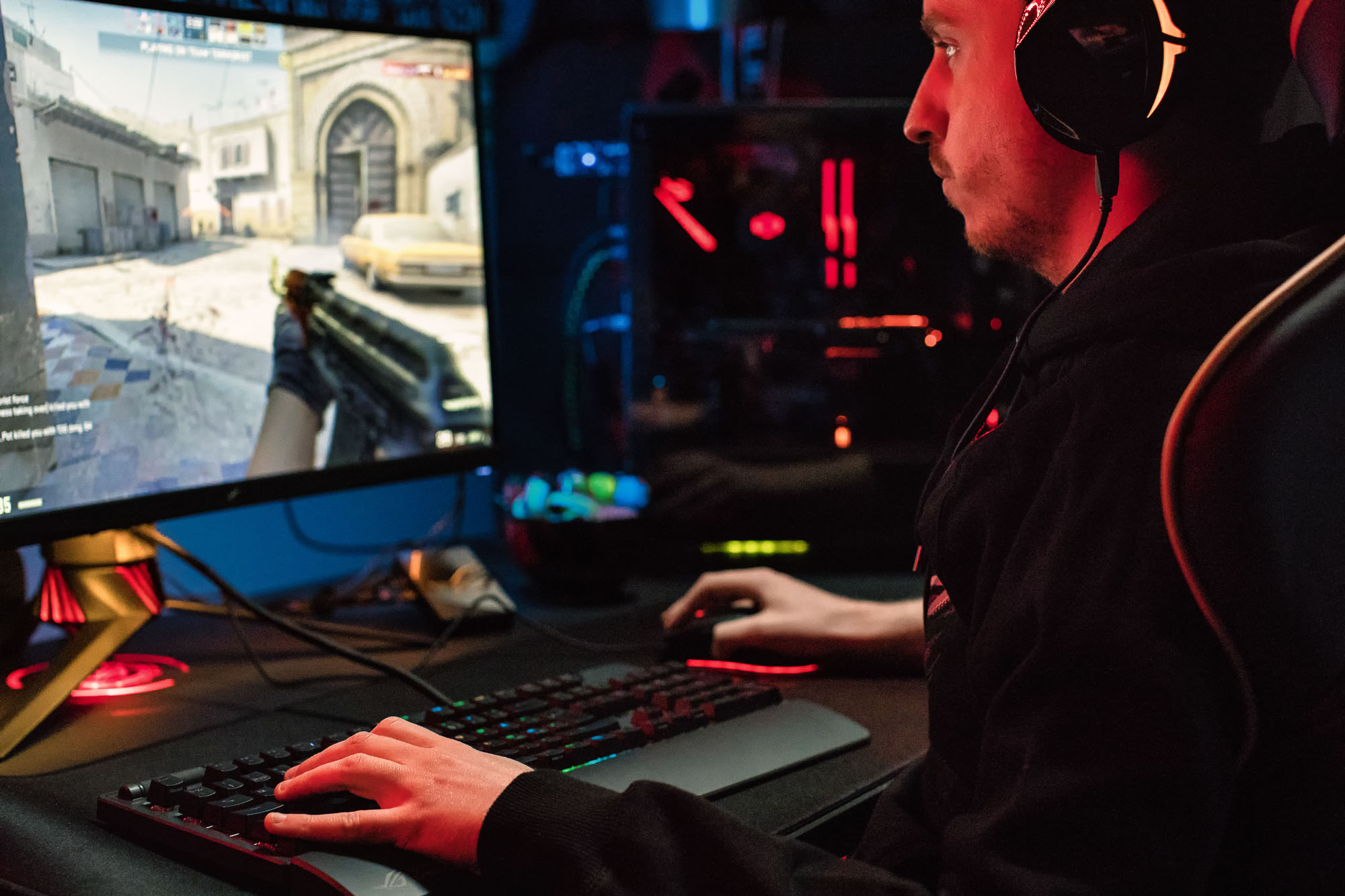 Details like aesthetics and ergonomics matter when you’re using this hardware all day, every day.
Details like aesthetics and ergonomics matter when you’re using this hardware all day, every day.
Top notch performance is non-negotiable, but other thoughtful touches help to keep players on top of their game. The GL12 has a hot-swap SSD tray for quickly loading games and player settings. The ability to swap out drives is required for tournament machines, but it’s convenient for anyone, especially players who might game on shared systems. The design is tool-less, and swapping drives in a new drive takes only a few sections.
While the GL12 keeps downtime to a minimum, ASUS Eye Care technology works to reduce the physical demands of staring at a screen all day. Certified by TUV Rheinland as low-blue-light and flicker-free, the PG258Q is comfortable for marathon practice sessions, and the team doesn’t have to worry about the blurring, double vision, and piercing headaches that can come with eye strain.
After the initial unboxing, there's always a question of whether gear needs tweaking. Pro gamers can be particular about settings, and for good reason. Gaming all day, every day, has a way of making you picky. Lekr0 was really pleased when he turned the PG258Q on and fired up CS:GO for the first time. “When you turn on the monitor, it’s already more saturated than others,” he says. He finds that other monitors feel undersaturated. They're “pretty much gray from the start,” he says. They need a lot more adjustments to get dialed in. REZ has had the same past experience. But with the ROG monitor it was different: “This monitor has really natural color,” he says.
Surprisingly, many CS:GO players like the game to be as vibrant as possible. It's not for any obvious performance reason, but because it makes the game more visually interesting and fun to play. That’s important when you're in-game for that many hours. “I pump it up to 70%,” says REZ, referring to the game’s digital vibrance. He even changes his in-game and display settings at every competition. Lekr0 makes similar adjustments. “I like a lot of colors when I play,” he says. “When it’s dark and gray it’s not even fun.” REZ says that lower-quality monitors don't handle these adjustments well.
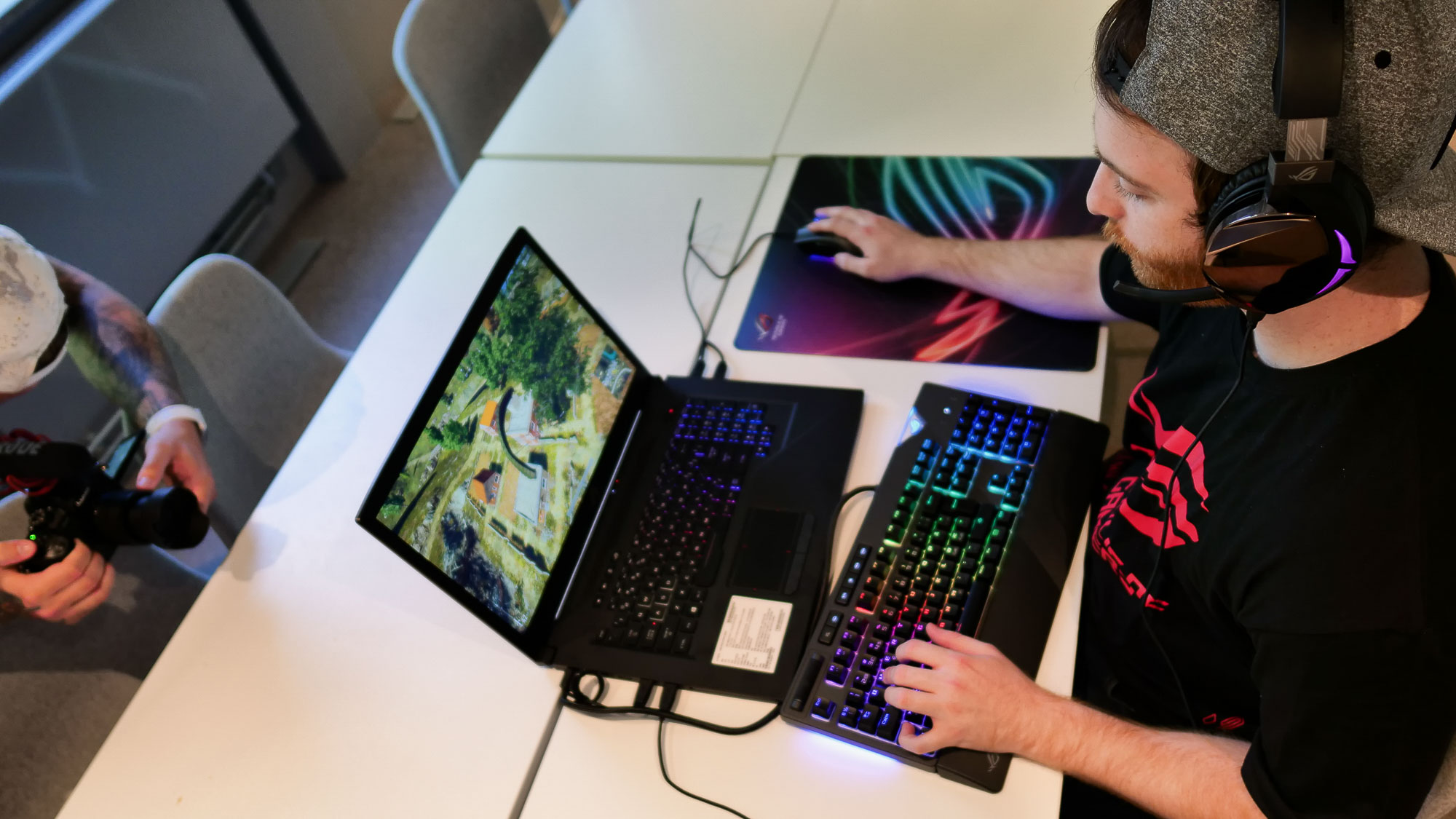 Sweaterr says that ASUS Aura Sync’s ability to match RGB lighting is icing on the cake for the Scar II’s sleek aesthetics.
Sweaterr says that ASUS Aura Sync’s ability to match RGB lighting is icing on the cake for the Scar II’s sleek aesthetics.
Insights like these highlight how pros' concerns go beyond performance. The same is true for details like design and ergonomics. When everyone has such individual preferences, equipment needs to be flexible. Lots of ASUS monitors have ergonomic touches designed to provide a wide range of comfortable positions. The ROG Swift PG258Q is extra-accommodating, with 90° of pivot, 35° of tilt, and 120 mm of height adjustment. The slim, tripod-style base also leaves plenty of space for various keyboard and mouse positions. Borg plays very close to his monitor and often finds he has issues smashing his mouse into the base stand. The PG258Q is one of the few where he hasn't had any problems.
Finally, when you're looking at your gear all the time or taking it where fans may see it, it better be easy on the eyes. f0rest loves the PG258Q’s aesthetics, while former NiP PUBG player Sweaterr says the Scar II laptop is easily on the of the best looking computers he’s ever seen. Beyond its durability, he says the sleek lighting is his favorite part. He’s a stickler for details like matching his peripheral lighting to his laptop with ASUS Aura Sync. He also loves how the outer ROG logo lights up. On top of its great performance, he says that “it’s just icing on the cake.”
Great expectations
Everyone knows that pro gamers expect a lot from their equipment. Their jobs depend on performing at a high skill level, so failure isn’t an option for their gear or for them. NiP has found the right combo with the ROG Strix Scar II’s portable performance, the ROG Swift PG258Q’s out-of-box perfection, and the ROG Strix GL12CX’s raw, uncompromising power. An organization as respected as theirs has earned the right to be choosy about their tech; thankfully, they’ve found this gear fits all the ways they game—all day, every day, for work and for play.
